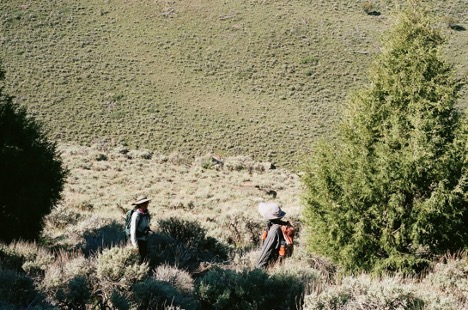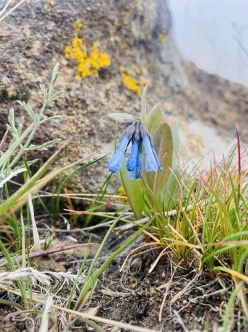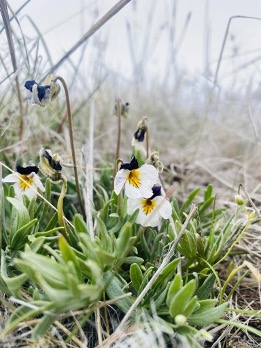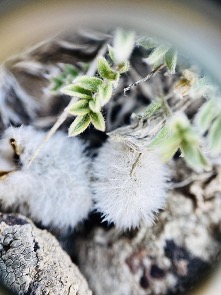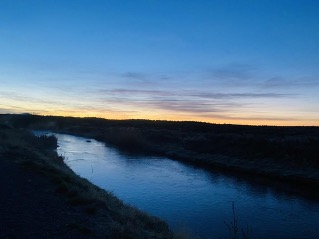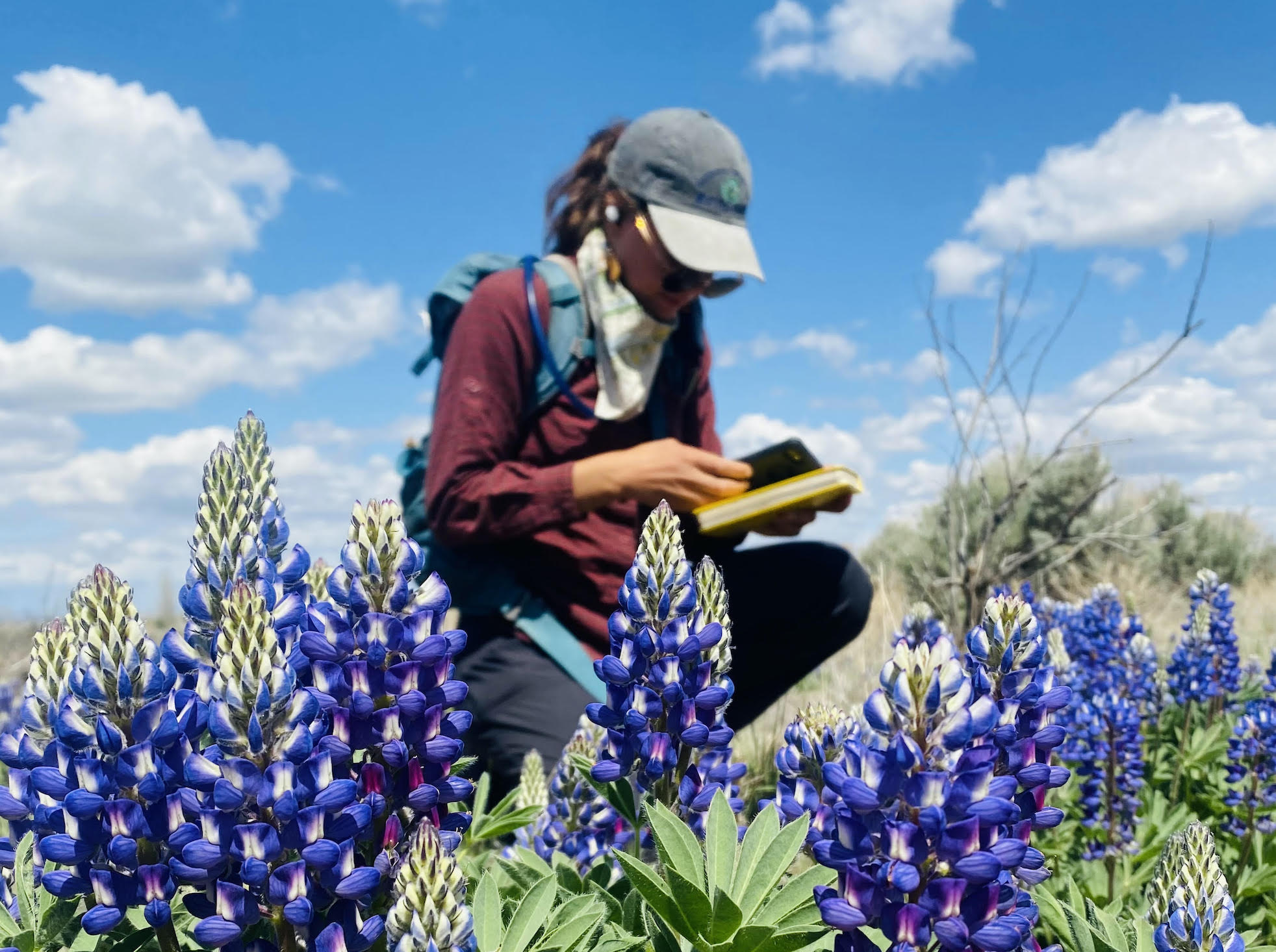
Surveying Rare Plants Today for Conservation and Restoration Tomorrow
By Devan Pensinger, Erin Fitz, and Wynter Nardi, IAE 2021 Idaho Rare Plant Crew
August 2021
Those of us on the Institute for Applied Ecology’s Idaho Rare Plant Crew just wrapped up a fun and exciting field season. Courtesy of funding from the Bureau of Land Management, we have been surveying populations of rare plants across southern Idaho. The data we collected will be used by local BLM offices and the US Fish and Wildlife Service to make future management decisions surrounding these rare plants.
We began our work in April when winter still reigned across the sea of sagebrush. Strong winds, rain, and hail were a regular occurrence as we scouted out the first growth of the season. Annual blooms of violets (Viola beckwithii), sagebrush bluebells (Mertensia oblongifolia), and nodding lilies (Fritillaria pudica) dotted the landscape with gems of color. As the season progressed, our work continued to bring us to several unique places: the otherworldly landscape of Craters of the Moon National Monument, the remote Jarbidge mountains, and the beautiful rolling hills at the base of the Pioneer mountains. Out in the field every day, we witnessed the passing of time through the ebb and flow of plant communities and their phenology. One of the greatest perks of such work is being able to explore sites where few people ever venture. The mountain meadows and swards of the Pioneer Mountains where we found the bug-leg goldenweed account for some of our favorite field sites. Working amongst the aspen, pines, Indian paintbrushes, lupines, and other mountain wildflowers provided a refreshing change of scenery from an increasingly hot and dusty desert.
We focused our efforts on several priority species this past field season— a few milkvetch species (A. oniciformis, A. atratus var. inseptus, and A. yoder-williamsi), twin-leaf onion (Allium anceps), bug-leg goldenweed (Pyrrocoma insecticruris), Lewis’ buckwheat (Eriogonum lewisii), a tiny primrose (Primula cusickiana), and an even tinier phacelia (Phacelia minutissima). A typical field day saw us counting the number of plant individuals and mapping the extent of a given population, taking note of the surrounding plant community and site characteristics. Additionally, we noted any potential or existing threats to the populations. Some field sites appeared to be severely impacted by invasive species, cattle grazing, historic fires, and road disturbances. At other sites, the native plant communities appeared to be largely intact and thriving. Knowing that our work will be used to determine future restoration and conservation efforts is one of the most rewarding aspect of our work!
About the Authors:
Devan Pensinger (Crew Lead) lead the Idaho Rare Plant Crew this year and last and has spent the past three summer field seasons working with the BLM in Idaho, collecting seed for the SOS program and monitoring special status plants. She is grateful to be able to do this fulfilling work while being able to explore and spend time in the landscapes she loves. Any day spent outside is a good day in her book. In her free time, she can be found bikepacking around the mountains of Idaho, hiking with her friends and family, and working in her garden. She got lucky with her crew members this season and enjoyed her time with them working on this project.
Erin Fitz (Technician) is passionate about all things related to plants and fascinated by their adaptations and unique interactions with other components of ecosystems. Prior to this season, work has brought her to the mountains of the Northern Cascades, the jungles of the Mariana Islands, the forests of Appalachia, and the expansive Mojave Desert. She has enjoyed immensely the opportunity to explore this incredible region of Idaho through the flora and landscape. When off the job, Erin enjoys climbing in the mountains, swimming in the nearest body of water, and dabbling in botanical illustration.
Wynter Nardi (Technician) loves to be out in the field and enjoys learning about the different plants and their scientific names. She is continuing to learn botanical terminology! In her free time, she explores all around Idaho by hiking or backpacking in the forests and capturing the beautiful scenery with film photography.
Restoration
Research
Education
Get Involved
Contact
Main Office:
4950 SW Hout Street
Corvallis, OR 97333-9598
541-753-3099
info@appliedeco.org
Southwest Office:
1202 Parkway Dr. Suite B
Santa Fe, NM 87507
(505) 490-4910
swprogram@appliedeco.org
© 2025 Institute for Applied Ecology | Privacy Policy
